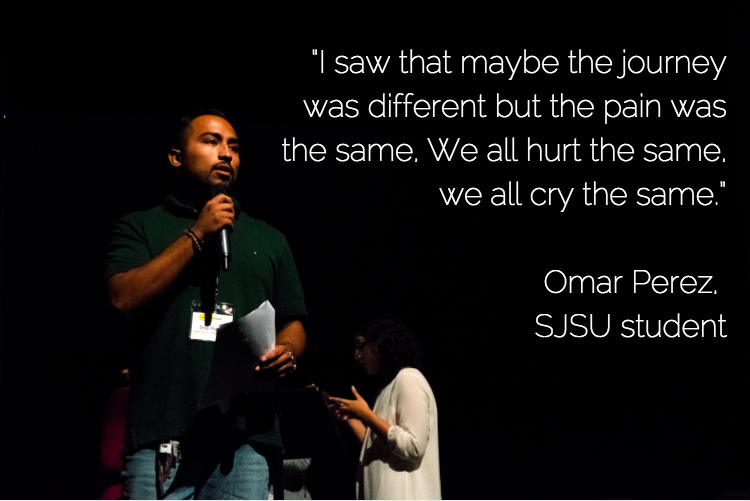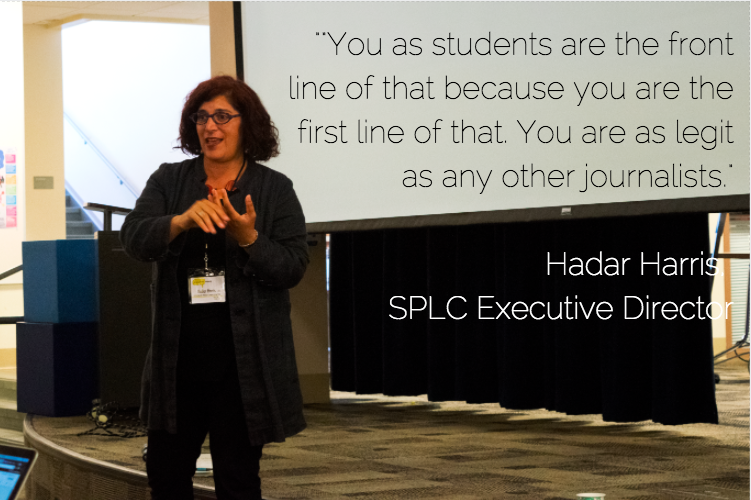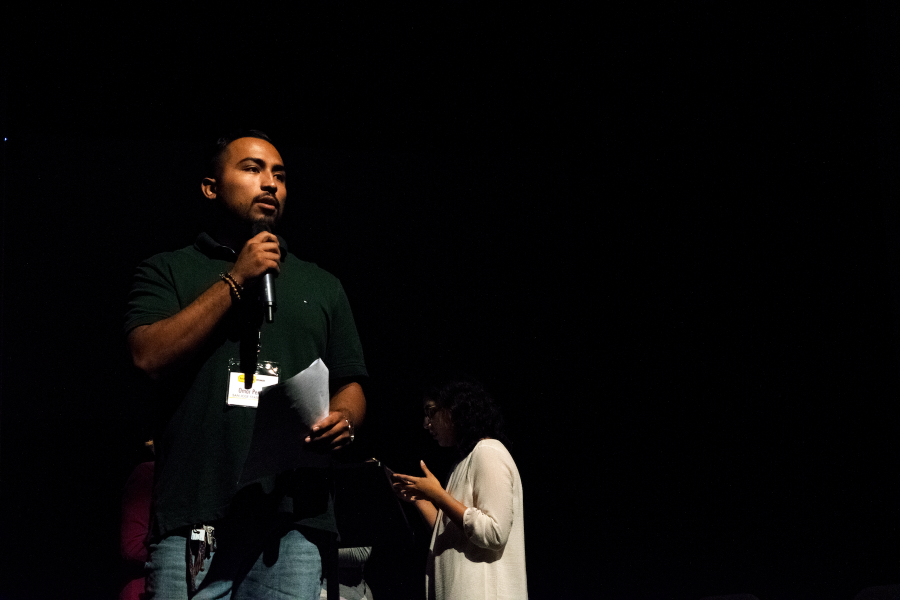Jazz music reverberates outdoors as student journalists gather around tables of pizza. It is their lunch break, which happens to be the only break during JEANC’s NorCal media day. It is not even noon yet, but they have already attended two sessions. And as the music fades away, the crowd disperses to listen to the keynote speaker, and attend their last session of the day.
The keynote speakers stand out for the very same reason they blend in — their age. These San Jose State University students are here to reflect on their experiences reporting in the Greece and Italy.
[embedyt] http://www.youtube.com/watch?v=i5qrPtcIuyc[/embedyt]
The students reflected on obstacles they faced — not knowing the language, the students had translators who spoke Farsi and Arabic. But the topic they were covering itself provided proved more difficult than the language barrier. Sarah Klieves discussed the difficulty of balancing the knowledge that she was there to do a job and her own emotions.
“We all have feelings, you know, and you have to walk that fine line of how much you [can] push it,” Klieves said.

For Omar Perez, the project ran deeper. It was personal for him since his parents were immigrants from Mexico, and he noticed that although the situations people were in were different, the emotion people felt was the same.
“I saw that maybe the journey was different but the pain was the same,” Perez said. “We all hurt the same, we all cry the same.”
Inside room 220 in the English building, Antonia Ehlers waits for the last few students to run inside before starting her presentation. She and three other professional journalists are getting ready to talk to students about journalism outside of high school and potential career paths a major in journalism can lead to. Ehlers is the president of the San Francisco Press Club and has worked with student journalists for almost ten years. She sees it as a way to help students find what they love and not be afraid to pursue it in the future.
“There are a lot of people in this world who hate going to work every day and I just really believe in helping teenagers to realize that, you know, going to work should be fun, and it will be if you pursue what’s in your heart,” Ehlers said.
Ehlers has also worked with the High School Journalism Boot Camp to help encourage and celebrate student journalists. Her presentation at NorCal media day is just another way to help future student journalists feel more confident majoring in a career under extreme scrutiny. Don Bott is a journalism advisor for Stagg high school in Stockton, and he too hopes that his presentation on editorial writing allows students to fight off a more common stigma against journalists.
For Bott, editorial stories, or the kinds of stories that present a publication’s opinion on a topic, are the most important for readers because they not only represent what the publication stands for, but can also help to shape the world.
“If someone’s attacking you, maybe that just means you’re doing something important,” Bott said. “If you’re standing up for what’s morally right, event if you’re in the minority, you’re going to be attacked.”

Hadar Harris is the new executive director of the SPLC. She hasn’t even gotten her new business cards yet, but she’s already busy at work. For the third session, she presented in the MAC atrium, speaking about her job, the role of the SPLC and student press laws.
Harris discussed the state of journalism today, saying that journalism is currently “under fire,” given the discussion about topics like fake news.
“I think we’re not talking enough about truth,” Harris said. “I think there’s a big conversation we should be having about truth.”
That includes student journalists — Harris says that defending a student’s right for free press is as important as defending any other professional news publication’s right to it.
“You as students are the front line of that because you are the first line of that,” Harris said. “You are as legit as any other journalists.”





